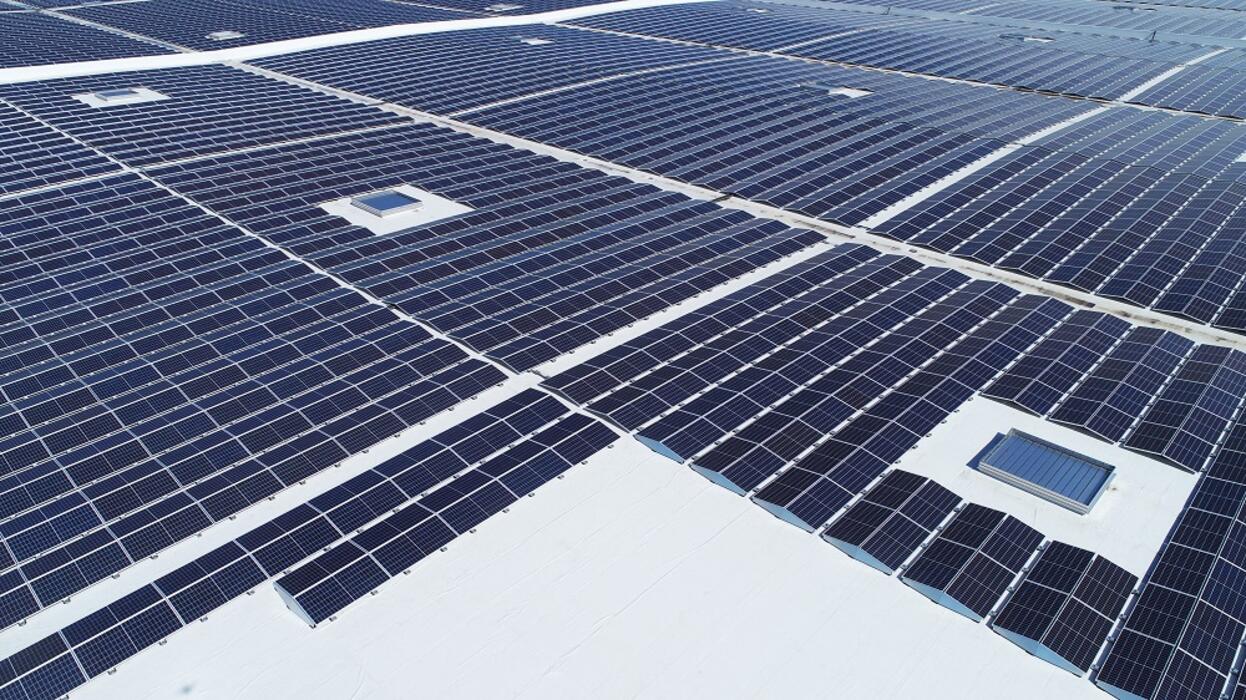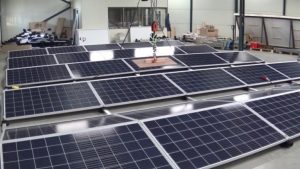
It is only 10% of the total investment, but it has to carry that investment for more than 20 years and make sure it pays off: the substructure or the mounting system for the solar panels on flat roofs. So, it’s important to think about it thoroughly. In this article Esdec, global leading supplier of solar mounting systems, explains the importance of selecting a high-quality mounting system and about what makes a good mounting system good.
A mounting system has to ensure that the system does not blow off the roof or cause damage to the roof structure. And because the system is not mounted in or to the roof, but is ballasted on the roof, it is of course important to know how much ballast you have to place and where. As much as possible to prevent the entire system from blowing off the roof due to possible gusts of wind? But you also don’t want to have too much ballast on the roof. Not only because of the cost, but also because you are limited in the maximum weight that the roof can bear.
We highlight two aspects of a mounting system that can make a positive difference: aerodynamics andmechanical coupling. When designing a mounting system, you must ensure that the wind can have as little effect as possible on the entire system. Sloping side plates that close off the open side of a dual field with panels make the whole a lot more aerodynamic and therefore less ballast needs to be placed in practice. Research also shows that bolts, screws and clamps that secure the panel to the mounting system provide about 18 percent extra drag (air resistance). That is why it is wise to ‘build inwards’ in your design: no protruding parts and only flat parts on the outside. This produces less air resistance, which has a positive effect on the ballasting.
Another way to safely reduce ballast is to design the mechanical coupling (=force/strength with which panels are connected to each other) as high as possible. You can do this, for example, by applying very strong cross connections in 2 directions in the fields. With Esdec’s FlatFix Wave Plus, this is done, for example, with the stabilizers and the dual base units. The higher the coupling, the better the panels are connected to each other, the less ballast is needed.
A reliable calculation of your project is crucial: how much material do you exactly need, how much ballast do you have to place and last but not least, where do you have to position the ballast? And this has to be determined very carefully. A first step / ingredient for a reliable project calculation is extensive testing. Valuable data is collected by subjecting the mounting system including panel to numerous wind tunnel tests. It is important to test many different scenarios, with different field sizes, different roof heights, different set-ups, etc. Supplemented with data from so-called (new) mechanical lift tests (to determine how tightly panels hold each other in certain places at a peak pressure), a calculation method can be developed to provide the most reliable ballasting for your system.
When designing your flat roof PV system, it is crucial that you correctly enter all parameters in the calculator, such as geographical location (wind zone and terrain category), height of the building and the type of roofing material in the calculator. Only then the calculator can guarantee a reliable installation, with the right amount of material, the right amount of ballast and the exact positioning of your ballast.


mechanical lift testing
To get maximum assurance that your design is the most reliable and safest design, you can easily check whether the project calculator has been tested according to international standards and has a certificate. Esdec has received Peutz certificates for its calculator used for safe, optimal design and ballast calculations. The certificates state that Esdec correctly uses the wind tunnel measurements of FlatFix Wave Plus and FlatFix Fusion, combined with results of mechanical lift tests and that all results have been correctly and safely processed in the Esdec calculator. These certificates are valid for three years, after which they can be renewed after a re-audit by Peutz.
Want to know more about Esdec? Check out our brand story